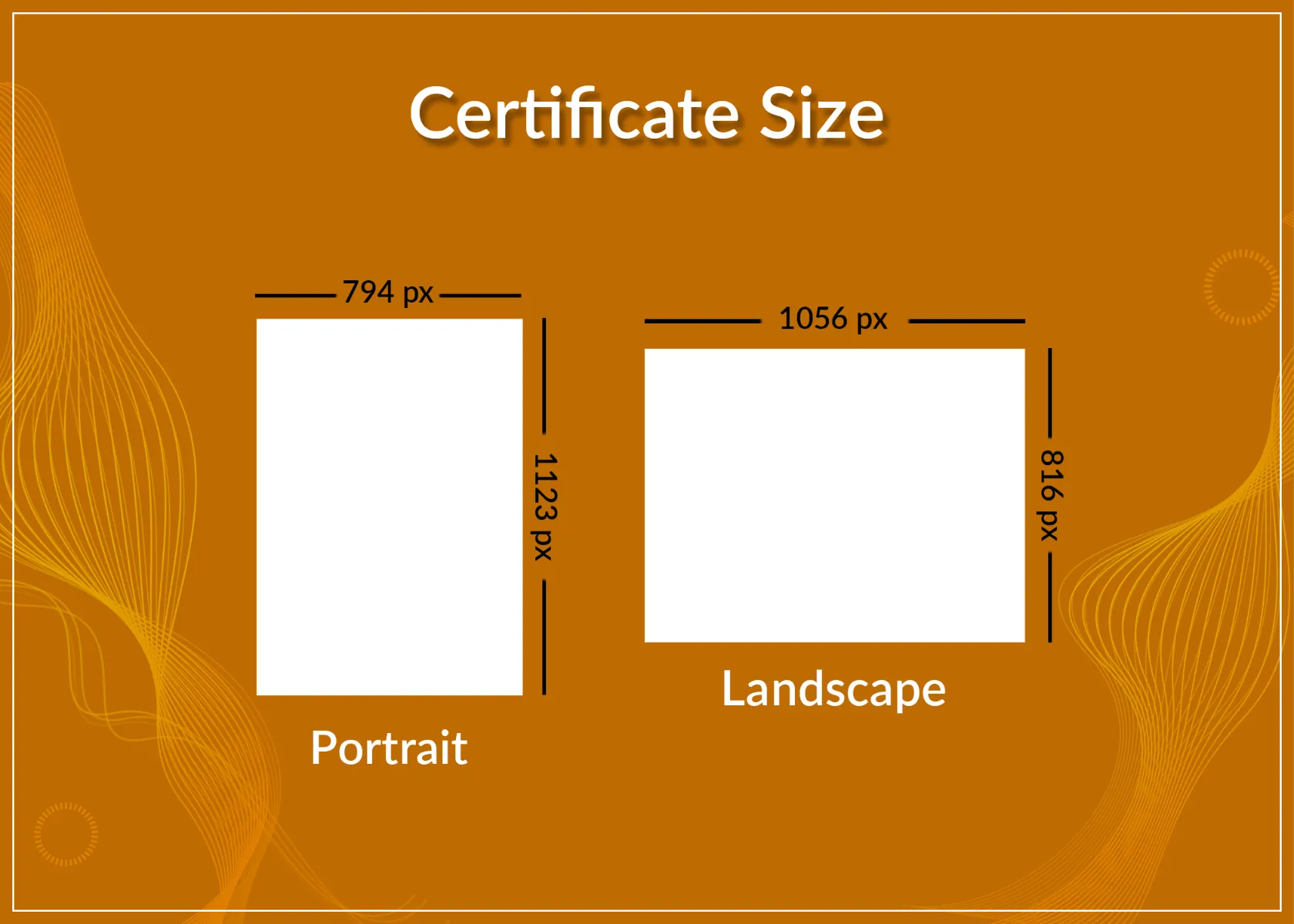Flyers are an indispensable marketing tool, used by businesses, organizations, and individuals to promote events, products, and services. They are a cost-effective way to reach a wide audience and convey your message effectively. One key aspect to consider when creating a flyer is its size. In this ultimate guide, we’ll explore what is flyer, standard flyer sizes used across the world, their uses, the specifications of each size, and offer design tips to help you create eye-catching flyers, no matter the dimensions.
What is a Flyer?
A flyer is a single-page document that is typically used for advertising or promoting an event, product, service, or cause. It is a printed or digital piece of promotional material that is designed to capture the attention of potential readers and convey important information in a concise and visually appealing manner. Flyers are often distributed in high-traffic areas, such as on bulletin boards, in mailboxes, or handed out at events and gatherings. They can be used for a wide range of purposes, including announcing a party, advertising a sale, promoting a business, providing information about a community event, or raising awareness for a social or political cause.
Flyers usually include eye-catching graphics, images, and text to convey the message and encourage people to take action, such as attending an event, making a purchase, or contacting a business. They are a cost-effective and versatile tool for marketing and communication. In addition to traditional printed flyers, digital flyers are also commonly used for online promotion through email, social media, and websites.
Standard Sizes for Flyers Used Across the World
Flyers come in various sizes to suit different needs and preferences. Here’s a table summarizing the standard flyer sizes used across the world:

| Flyer Size | Dimensions (inches) | Dimensions (mm) | Common Use Cases |
| A3 | 11.7 x 16.5 | 297 x 420 | Large event posters, presentation handouts |
| A4 | 8.3 x 11.7 | 210 x 297 | Brochures, event promotions, menus |
| A5 | 5.8 x 8.3 | 148 x 210 | Promotional handouts, invitations |
| A6 | 4.1 x 5.8 | 105 x 148 | Compact promotional materials |
| A7 | 2.9 x 4.1 | 74 x 105 | Pocket-sized handouts, business cards |
| Square | Various sizes | Various sizes | Unique and eye-catching designs |
| Portrait | Customizable | Customizable | Versatile for various purposes |
| Landscape | Customizable | Customizable | Ideal for showcasing visuals and graphics |

Now, let’s dive into the specifics of each flyer’s size and its uses.
A3 Flyer Size
A3 flyers are one of the largest standard sizes available. They measure 11.7 x 16.5 inches (297 x 420 mm) and are commonly used for large event posters, presentation handouts, and information-rich displays. Due to their substantial size, A3 flyers allow for detailed graphics, making them an excellent choice for conveying a lot of information or showcasing high-resolution images.
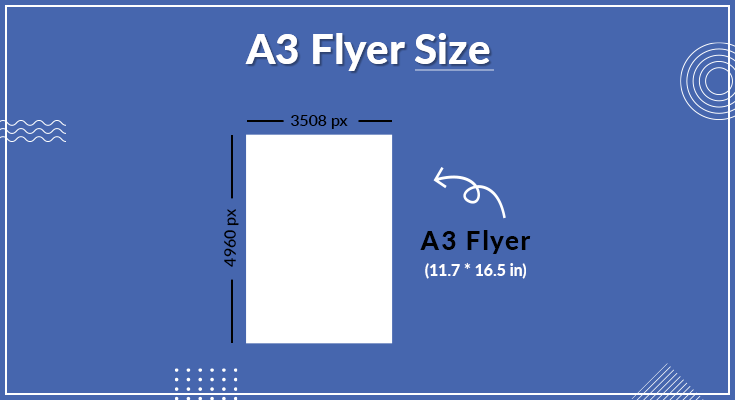
Use:
- Ideal for large-format posters, event announcements, or product showcases.
- Suitable for displaying detailed information and eye-catching visuals.
- Can be used to promote events, conferences, art exhibitions, and more.
A4 Flyer Size
A4 flyers, measuring 8.3 x 11.7 inches (210 x 297 mm), are the most common flyer size. They are perfect for brochures, event promotions, menus, and informational handouts. Their compact size strikes a balance between providing enough space for content and remaining easy to distribute and handle.
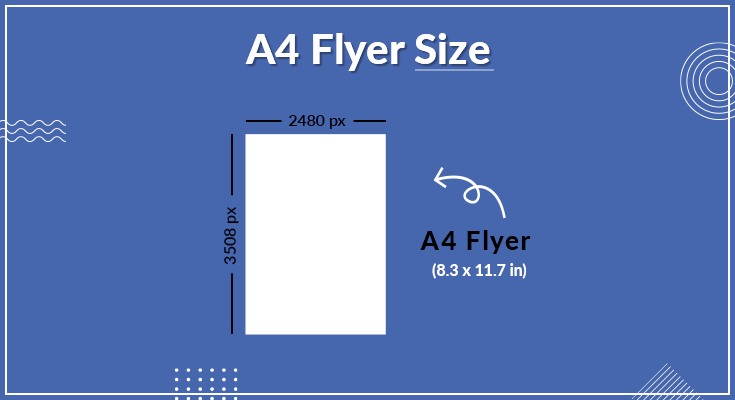
Use:
- A common choice for standard-sized flyers, brochures, and event promotions.
- Easily fits into envelopes and is cost-effective to print in bulk.
- Suitable for business promotions, event details, product catalogs, or menus.
A5 Flyer Size
A5 flyers are half the size of A4, measuring 5.8 x 8.3 inches (148 x 210 mm). They are ideal for promotional handouts, invitations, and marketing materials. A5 flyers offer a portable, easy-to-carry format while still allowing enough space for essential information and visuals.
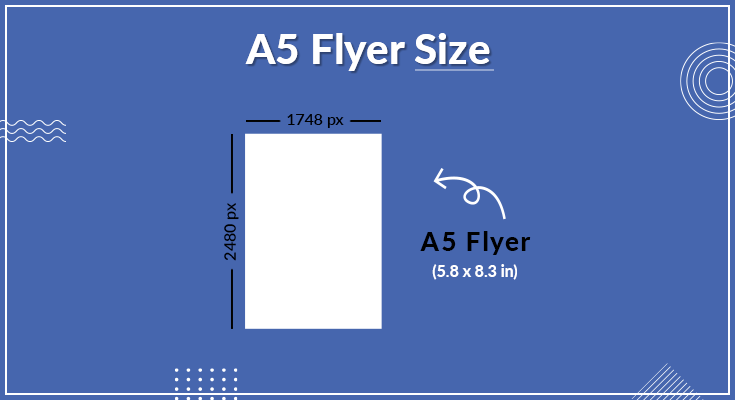
Use:
- Compact and versatile, perfect for handing out to potential customers.
- Great for promoting small businesses, services, or events.
- Often used for restaurant menus, real estate listings, and product highlights.
A6 Flyer Size
A6 flyers are even smaller, at 4.1 x 5.8 inches (105 x 148 mm). Their compact size makes them perfect for pocket-sized promotional materials. A6 flyers are often used for quick, eye-catching promotions and are easy to distribute at events or in high-traffic areas.

Use:
- A smaller format that’s convenient for quick distribution.
- Ideal for promoting flash sales, discounts, or as invitations.
- Effective for trade shows, local events, or limited-time offers.
A7 Flyer Size
A7 flyers are the smallest of the standard sizes, measuring 2.9 x 4.1 inches (74 x 105 mm). They are similar in size to business cards and are commonly used for pocket-sized handouts, business cards, and promotional materials that need to be extremely compact and portable.
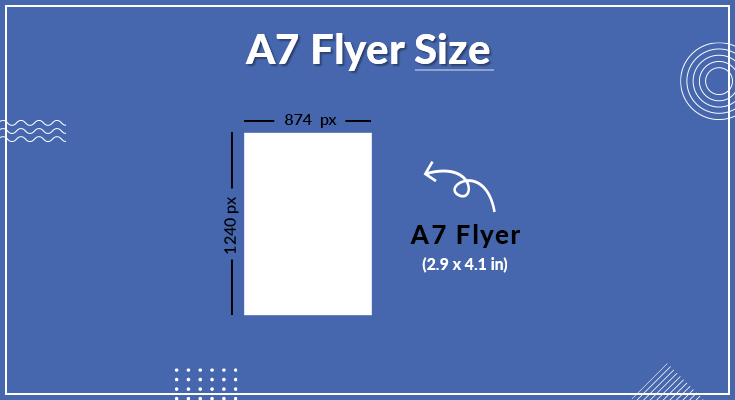
Use:
- Extremely compact and easily fits into pockets or wallets.
- Suitable for small promotional items like loyalty cards, discount vouchers, or gift certificates.
- Perfect for businesses looking to provide convenient, pocket-sized information.
Square Flyer Size
Square flyers come in various sizes, with a common option being 5.8 x 5.8 inches (148 x 148 mm). The unique square shape can make your flyer stand out. Square flyers are often used for creative and eye-catching designs, making them an excellent choice for artistic or visually striking promotions.

Use:
- Unique and eye-catching, great for artistic and creative promotions.
- Well-suited for product launches, art exhibitions, or Instagram-style marketing.
- Gives a modern and trendy look to your marketing materials.
Portrait and Landscape Flyer
Portrait and landscape orientations are not fixed sizes but refer to the orientation of your flyer. You can choose to design your flyer in either portrait (vertical) or landscape (horizontal) orientation based on your content and design preferences. Portrait orientation is often used for a more traditional and text-heavy layout, while landscape orientation is ideal for showcasing visuals and graphics.
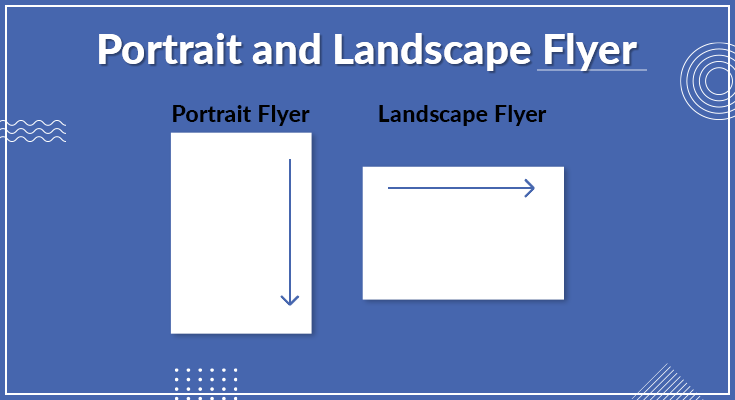
Use:
- Depending on your content and design, you can choose between portrait (vertical) or landscape (horizontal) orientation for any of the above sizes.
- Portrait is commonly used for event details, service descriptions, and product showcases.
- Landscape may be suitable for scenic photography, wide product displays, or detailed infographics.
How to Make a Flyer: A Comprehensive Guide to Make a Flyer Design
Paper Used When Making a Flyer
Choosing the right paper type is crucial for the quality and durability of your flyer. Here are some common paper options:
- Glossy Paper: This paper has a shiny finish and is ideal for vibrant, colorful designs. It’s often used for promotional materials where visuals are essential.
- Matte Paper: Matte paper has a non-reflective surface and offers a more sophisticated and elegant look. It’s suitable for brochures, informational handouts, and professional presentations.
- Recycled Paper: Environmentally friendly and rustic in appearance, recycled paper is an excellent choice for eco-conscious brands and organizations.
- Cardstock: Thicker and more durable than standard paper, cardstock is great for high-quality, long-lasting flyers. It’s commonly used for business cards and invitations.
- Textured Paper: Textured paper adds a tactile element to your flyer, making it more memorable and unique.
When choosing paper, consider the intended use of your flyer, the design, and your target audience. Each paper type has its own unique characteristics that can enhance or detract from the overall impact of your flyer.
Crafty Art’s Instagram Flyer Maker : Create Instagram Flyers
Tips For All Types of Flyer
Creating an effective flyer involves more than just choosing the right size and paper. The design plays a crucial role in capturing your audience’s attention and conveying your message. Here are some essential design tips for all types of flyer sizes:
- Eye-Catching Graphics: Use high-quality images and graphics that are relevant to your message. Visuals should support and enhance your content.
- Color Scheme: Choose a color scheme that aligns with your brand and the message you want to convey. Consistency in colors can help with brand recognition.
- Font Selection: Use legible fonts that are easy to read at a glance. Consider using different font sizes and styles to create a hierarchy and emphasize key points.
- Whitespace: Don’t overcrowd your flyer with text and images. Whitespace is essential for visual balance and readability.
- Call to Action (CTA): Include a clear CTA that tells your audience what to do next. Whether it’s visiting a website, making a call, or attending an event, the CTA should be prominent.
- Testimonials or Reviews: If applicable, add customer testimonials or reviews to build trust and credibility.
- Proofreading: Always proofread your flyer for spelling and grammatical errors. Mistakes can detract from your message’s credibility.
- Print Quality: Ensure your flyer is designed in high resolution to maintain print quality. Low-quality images or graphics can result in a blurry or pixelated final product.
- A/B Testing: If budget allows, consider creating multiple versions of your flyer with slight variations and conduct A/B testing to see which design is more effective.
Conclusion
Choosing the right flyer size is a critical step in creating a successful marketing tool. Consider the standard sizes used across the globe and select the one that best fits your goals and content. Remember that the design and paper choice are equally important, as they impact the overall effectiveness of your flyer. With the right size, design, and content, your flyer can be a powerful tool for promoting your business or event and engaging your target audience.


